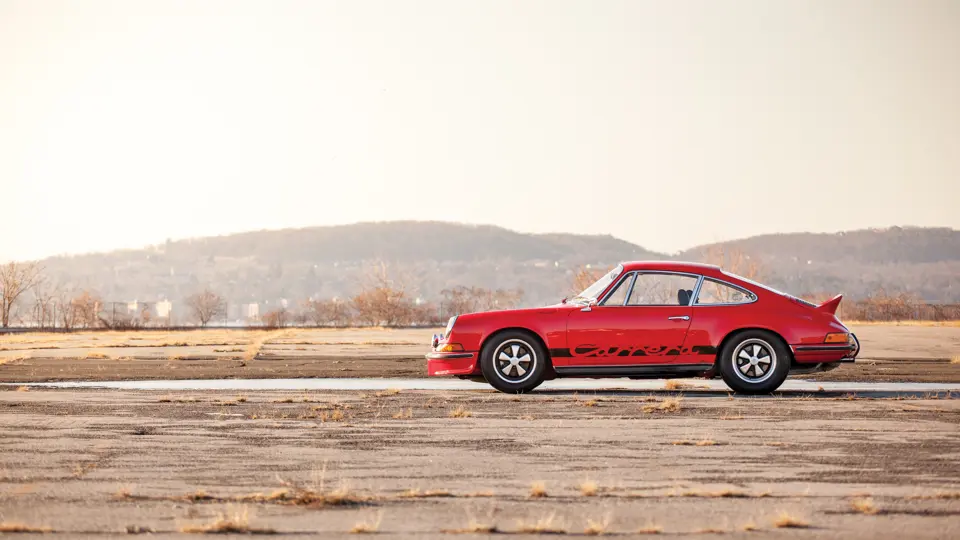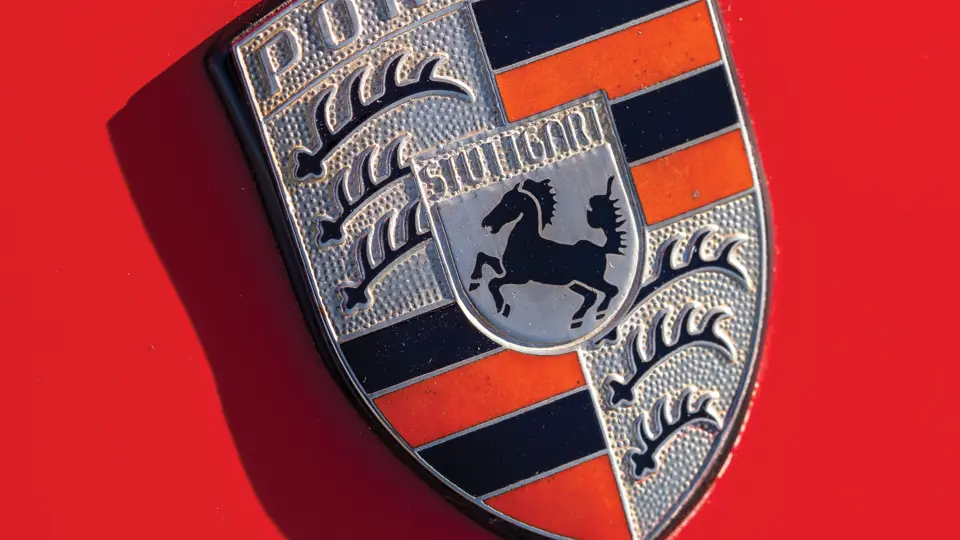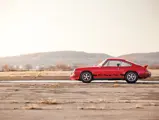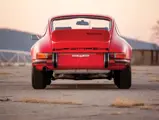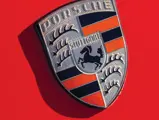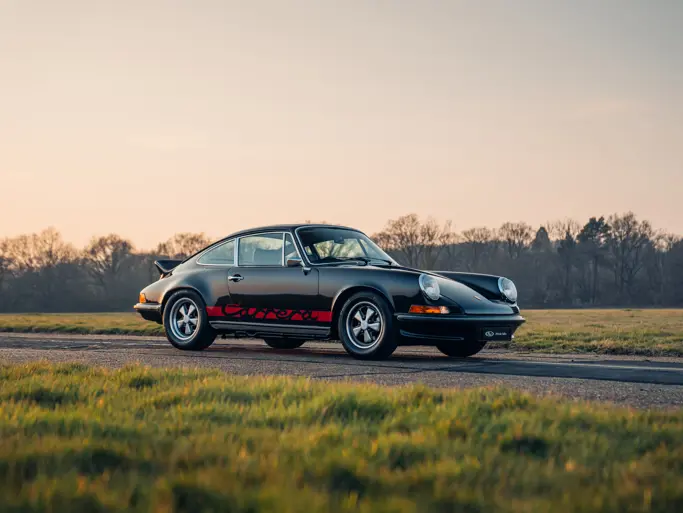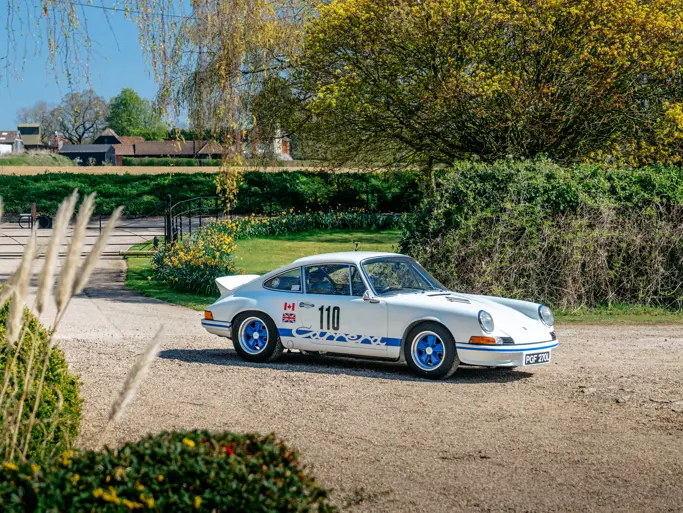
1973 Porsche 911 Carrera RS 2.7 Touring
{{lr.item.text}}
$891,000 USD | Sold
{{bidding.lot.reserveStatusFormatted}}
- The “ultimate” and legendary road going first-generation 911
- Matching numbers and unblemished known history
- Authentically restored to award-winning standards by marque specialists at Kundensport
- Wearing the striking, special-order color of India Red from new
- Meticulously perfected to drive superbly
210 bhp, 2,687 cc SOHC air-cooled horizontally opposed six-cylinder engine with Bosch mechanical fuel injection, five-speed manual gearbox in the rear transaxle, four-wheel torsion bar independent suspension, and four-wheel hydraulic disc brakes. Wheelbase: 89.4 in.
Porsche still sought to remain competitive in motorsport after the 917 ceased competition due to a change in regulations, so they chose to pursue racing in Group 4 and 5 of the FIA’s Appendix J, where the cars were based on production sports cars. Porsche designated its already formidable 2.4-liter 911 S as the starting point for a new Group 4 GT class entry. Following the proven racing formula of reducing weight while adding power, Porsche’s engineers got to work and went on to create the most sporting 911 to be available to the public, the Carrera RS.
As the RS was blessed with numerous performance upgrades over the existing 911 models, it was a car that could just as easily bare its teeth on a race track, and in fact, it was conceived to do so. The basis of the car was the 190-horsepower, 2.4-liter engine, but it was enlarged to 2.7 liters through the utilization of new 90-millimeter cylinders and its bores had been coated with a new low-friction material called Nikasil, which has since become commonly used in high-performance cars. The engine was equipped with the reliable Bosch mechanical fuel injection and could develop 210 brake horsepower at 6,300 rpm. The suspension was also upgraded, and the wheel arches were broadened six inches at the front and seven inches at the rear to fit wider lightweight Fuchs wheels. However, the Carrera RS’ most defining feature was its burzel (ducktail) rear spoiler. Finally, its curb weight was reduced to a feather-light 2,370 pounds, which only added to the car’s performance. Needless to say, this was a very quick car. It was capable of sprinting from 0 to 60 in just 5.5 seconds and reaching a top speed of 150 mph, which are impressive figures even when compared to modern production cars.
Homologation for Group 4 required the production of at least 500 cars, but that number was easily eclipsed due to the overwhelming demand for the sportiest 911 money could buy. By the time production ceased, 1,590 examples had been built, consisting of 1,308 road-ready Touring models, 200 Lightweights, 17 RSH prototype and development cars, and 55 RSRs.
Chassis 9113601108 was built to Touring specifications and delivered new to its native Germany. It was one of just thirty examples finished in special-order India Red paint, which is the same hue it wears today, and in addition to its special color, it was fitted with sport seats, retractable seat belts, through-the-grille fog lights, and a limited slip differential. True to its origins, the car still retains all of these options today.
Although the car’s early history is unknown, it did spend some time in a Japanese museum after departing Germany, and it was repainted white with blue stripes. Afterwards, the car was shipped to the United States, where it was purchased by George Valerio. At that time, it was noted that the car was in excellent condition, as it still retained its matching-numbers engine. The car later found its way to Phillip Coombs, of Santa Barbara, California, who decided to commission a rotisserie restoration for his newly acquired Carrera RS.
The car was sent to Porsche specialists at Kundensport in Camarillo, who were charged with overseeing the project and doing the majority of the work. The car was taken down to bare metal and refinished in its correct shade of India Red. The drivetrain was rebuilt by Porsche specialists (the Aase Brothers in Anaheim), and the restoration of the car’s interior and original sport seats was left to Tony Garcia, of Autobahn Interior in San Diego. During the restoration, it was noted that the car was still fitted with an incredible number of its original components, down to the correct fog lights and date-stamped seat belts. It was also noted that the car had never received any accident damage, and its original panels are unblemished. Well-known Porsche 911 RS specialist David Mohlman similarly commented that this RS was an outstanding example, and he remembered it as an example with a first-class, authentic restoration.
Upon completion of the restoration in 2012, the car was sold to prominent collector Don Davis, who fitted it with its recognizable “Carrera” side-stripe graphics. It was then subsequently purchased by a knowledgeable Colorado-based collector. In his possession, the car was meticulously and professionally dialed-in for road use, and it is reported to run and drive impressively, which one must experience to fully appreciate its rewards. The RS has covered just under 1,000 miles since the completion of its restoration, and it was shown at the 30th annual Concours d’Elegance of Colorado in 2013, where it took First Place in the Early Porsche category and was judged by the PCA to an unprecedented 240.6 points out of 240, with the additional 0.6 points being awarded for the car’s high level of genuine components, which further confirms its high degree of originality. A full tool kit and owner’s manual accompany the car, as well as its Porsche Certificate of Authenticity, which verifies its original numbers, options, and correct color of India Red.
As the 911 has endured through to present-day production, it is clear that there will always be a special place in Porsche history for this first competition-based homologation model. The Carrera RS, undoubtedly the most desirable model of air-cooled 911s, is nothing short of legendary, and the example presented here is undoubtedly one of the finest extant. As it still remains in absolutely spectacular condition following its expert restoration, it would be a wonderful entrant at any concours and it would be equally at home driving to and from such an event, ideally with some side trips scheduled.

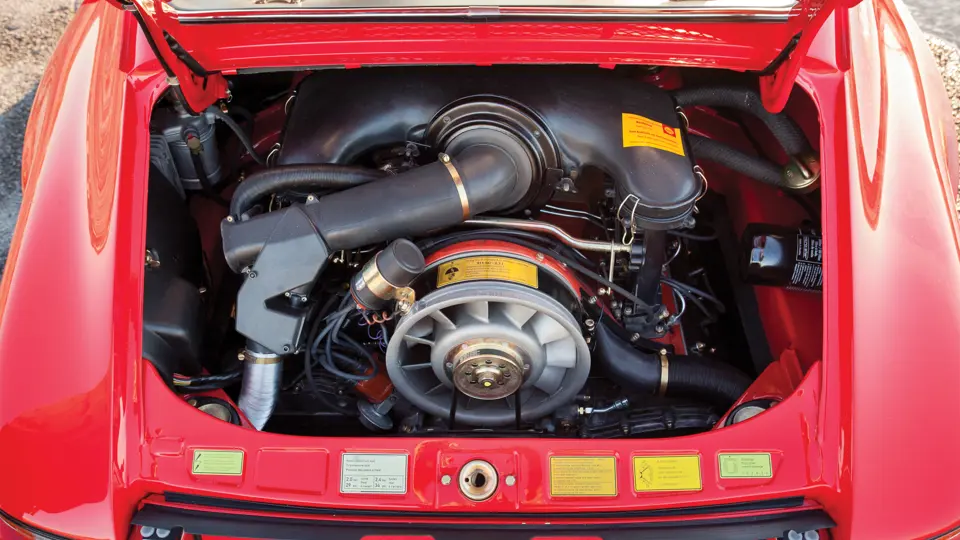
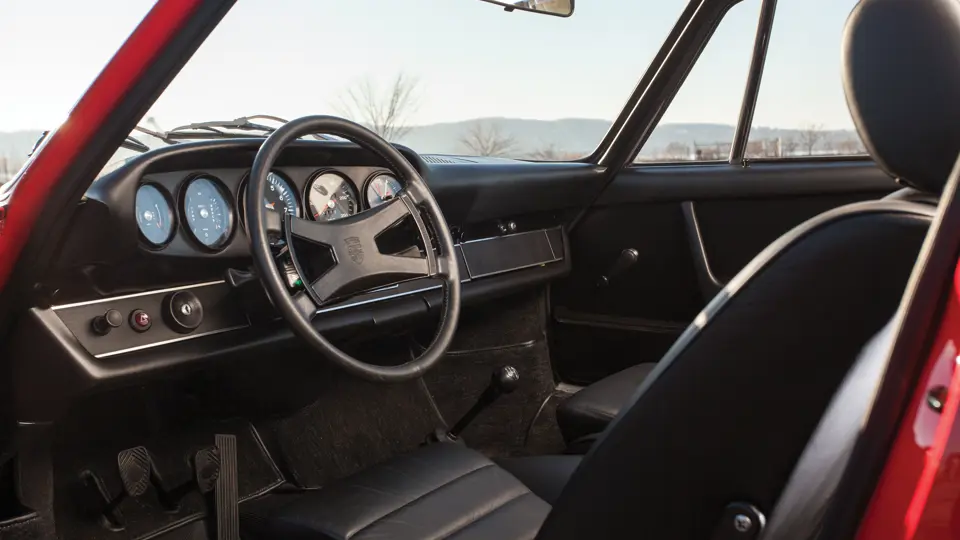

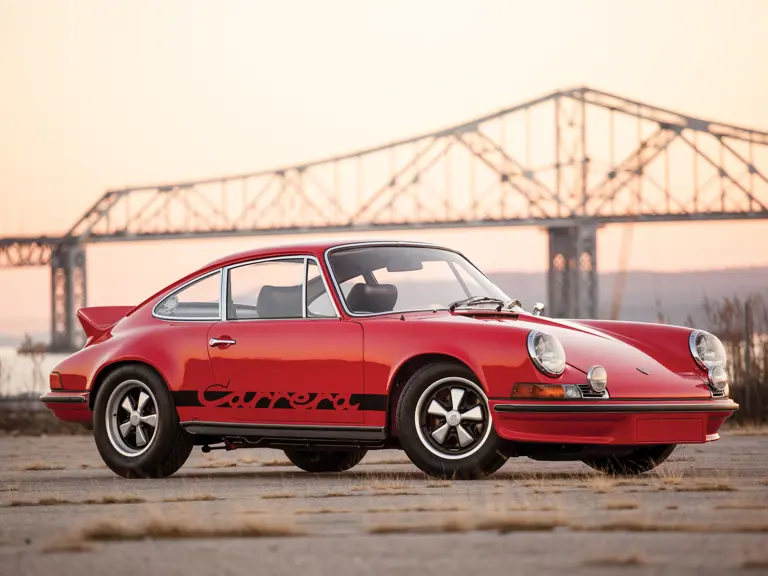
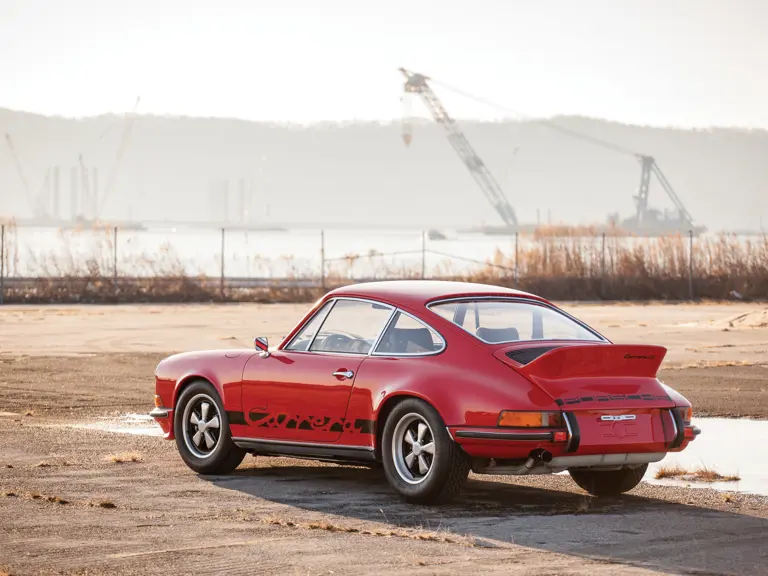

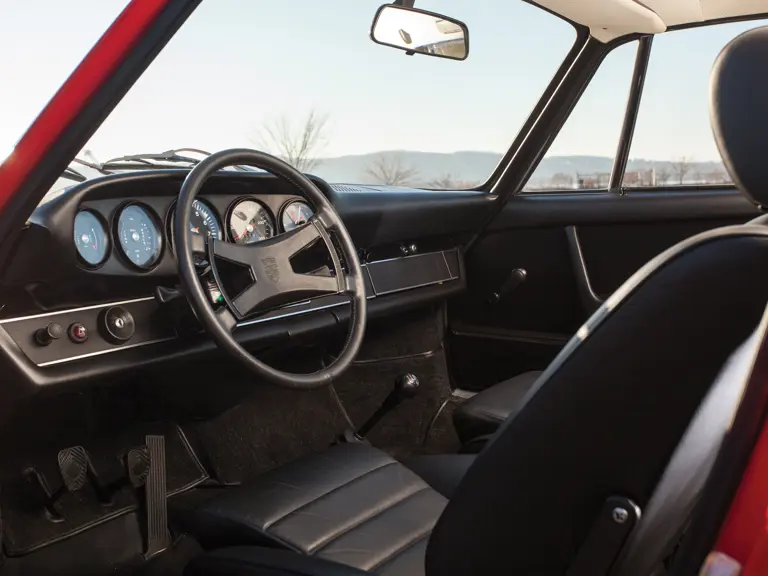

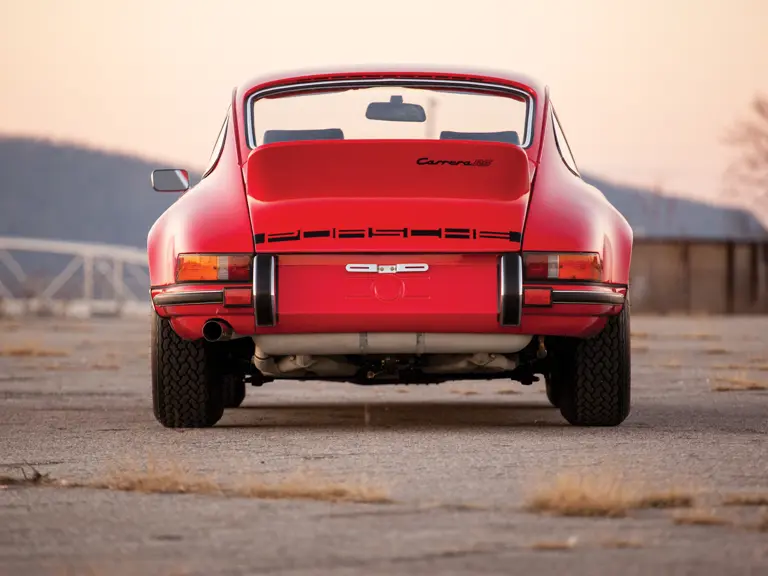
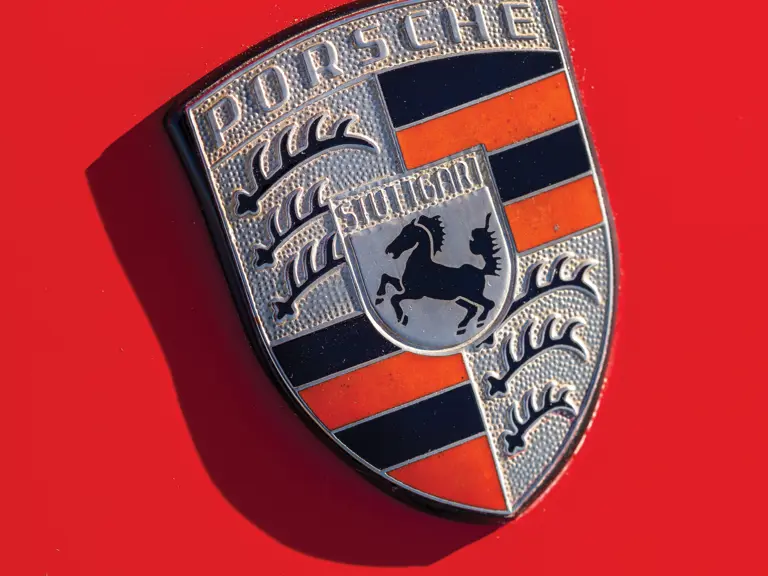
 | Amelia Island, Florida
| Amelia Island, Florida
